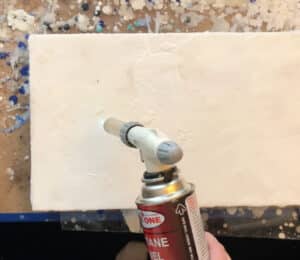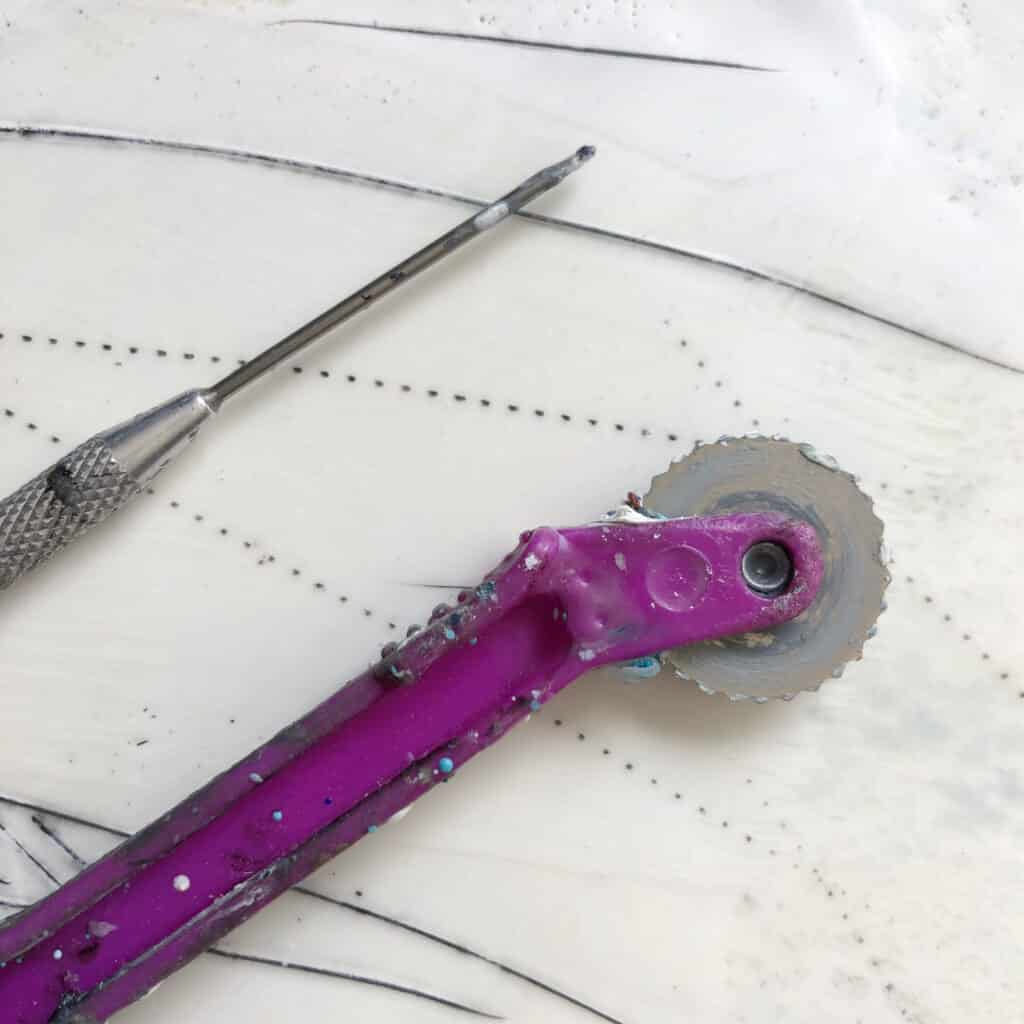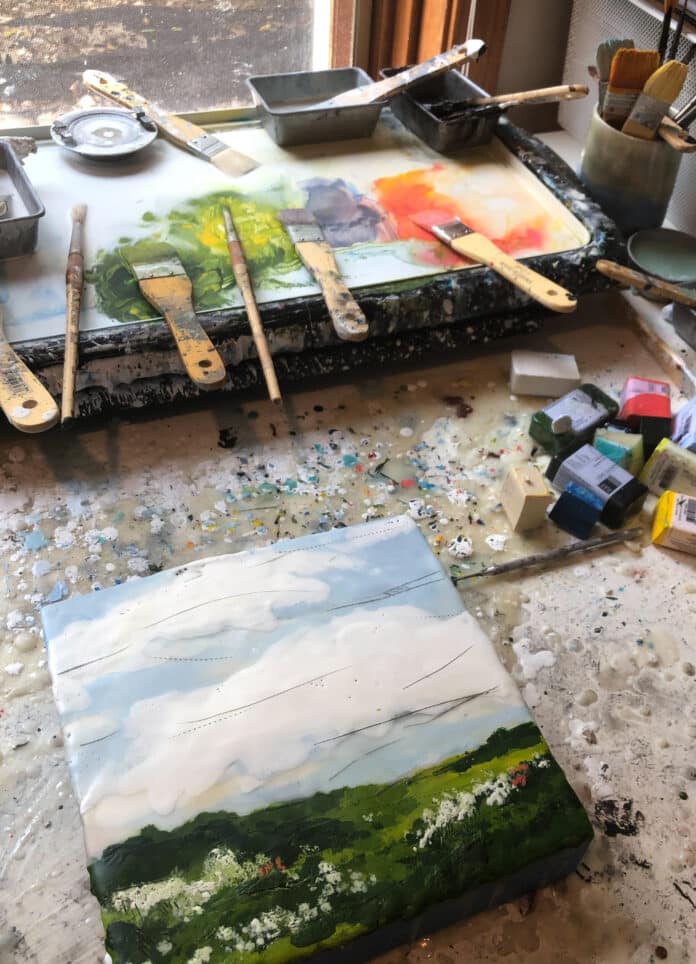Ever since we started collaborating around the installation of Jodie Sutton’s inspiring ENCAUSTIC AUTUMN LANDSCAPES, my husband David and I have been enchanted by Jodie’s provocative art—art that she makes by painting layers upon layers of pigmented hot wax which she applies with brushes then fuses with her blowtorch. The application of high intensity heat is an essential step in creating encaustics.
Wanting to understand the details of this artistic process, David’s been asking me, “When and where did encaustics begin? If encaustics came before blowtorches existed how was heat applied? What did artists use if they didn’t have blowtorches?”
When David gets his curiosity all revved up and puts his questions to me, he just won’t give them a rest until he gets sufficient explanations to satisfy his persistent queries. At last he’ll have his answers here.
Encaustics were first created in Greece.
An ancient painting medium with roots running as far back as the fifth century B.C., encaustic, meaning “to burn in or fuse”, was first practiced by the artists of ancient Greece.
As the oldest known pigment binder, encaustic combines molten beeswax with dry pigment and tree resin. Encaustic is completely resistant to the effects of moisture. This main preservation property of encaustic was instrumental for weatherproofing Greek ships. Introducing pigments to the wax brought about the decorating of ships with colorful iconography.
Greeks that settled in Egypt adopted the custom of honoring their dead by painting their portraits. Their encaustic rendering of a deceased, in the prime of life or after death, was placed over the mummy of the person. The Fayum Portraits are the most well-known of these funerary paintings. They are the only encaustic paintings that survive from ancient times.
Some of the Fayum Portraits dating 3,500 years old are part of the Egyptian collection at the Metropolitan Museum of Art as well as in other museum collections around the world. All of these encaustic works are in very good condition considering how old they are. In comparison, most Renaissance paintings are only 500 years old, cracking and in need of extensive restoration work.
The painting of portraits with encaustics lost favor with time. Leonardo da Vinci and other artists attempted unsuccessfully to revive the technique. Eventually in the twentieth century encaustics enjoyed a major rebirth in popularity. Among contemporary encaustic paintings most familiar to us are the works of Diego Rivera and American Pop artist Jasper Johns. Johns, who has received presidential recognition for his outstanding artistic contributions to our country, was my introduction to the medium of encaustics when I was living in New York City. That’s when I first learned of this process that uses heat to fuse layers of wax.
In ancient times, the encaustic fusing process was achieved by putting a flame under metal that heated the painting.

Today the encaustic is a very versatile medium that offers a variety of handling methods. Once molten, the wax is applied to the surface with a brush or other tools and fused with a heat gun, heated iron or propane torch. In earlier times, the same fusing process was achieved by putting a flame under metal that heated the entire surface of the painting. Because of the adherent nature of wax, this medium also works well with the application of collage materials.
As a hardening agent, Damar tree resin is added to the molten wax. The resin also acts as a bonding agent as well as a hardening agent for the beeswax. Like in ancient times, this resin is what gives encaustic paintings their rich and glasslike sheen if buffed. Just before guests arrived for Jodie’s Opening Reception, Jodie moved through all the galleries carrying small, soft white cloths and gently buffing each of her paintings—making them at their very best for their evening debut.
Encaustic is best painted onto rigid wood. A variety of other surfaces can also be used. The applied wax can be thick or thin, translucent, clear or opaque or molded. The wax surface can be scraped, carved or etched into. Jodie Sutton uses various techniques and tools, including exacto knives, to achieve the exquisite details and textures in her painting surfaces. Among my favorites of her details are the randomly appearing dark, dashed lines. She makes these using a small pointed-toothed wheel, the very same type of wheel I once used when transferring onto fabric the cutting lines printed on tissue paper dress-making patterns. Virtually any color pigment can be added to the hot wax though consistency and pigment particle size varies. To intensify details, Jodie uses pigment sticks (that come premade from R&F Paints) rubbing the color into the lines and wiping away any excess.

To view Jodie’s painting process please visit:
https://www.jsuttonstudio.com/?fbclid=IwAR1coDUNqcEI-sFSx46f4meZ3RMuGWmC2fsawyjrxHt9dQPFdYmoyUIucz8
ENCAUSTICS: When and where did they begin? With your now knowing the answers, be sure to visit ENCAUSTIC AUTUMN LANDSCAPES which continues on view at Hyde House during weekend hours through November 17, 2019.

















